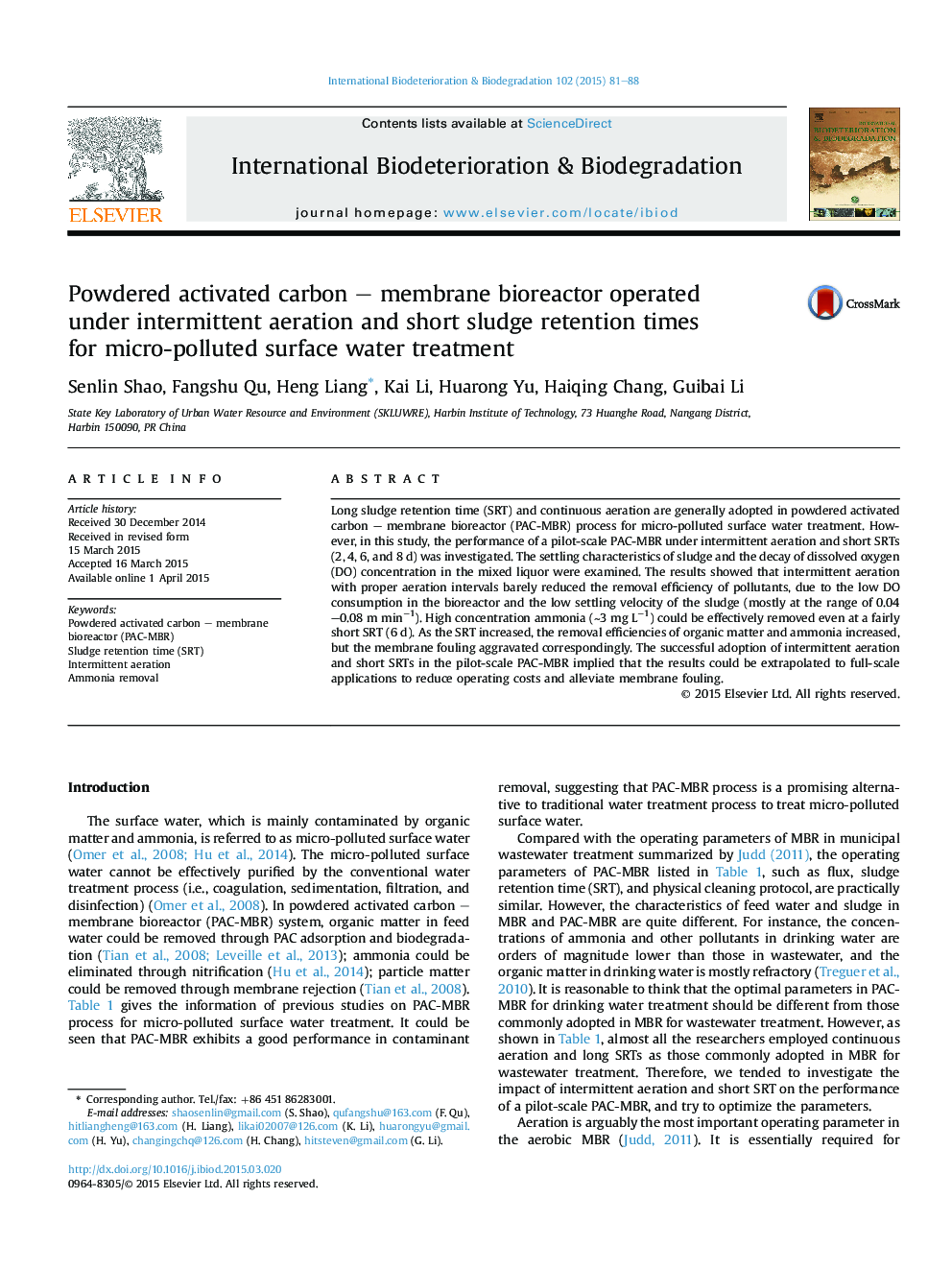| Article ID | Journal | Published Year | Pages | File Type |
|---|---|---|---|---|
| 4364352 | International Biodeterioration & Biodegradation | 2015 | 8 Pages |
Abstract
Long sludge retention time (SRT) and continuous aeration are generally adopted in powdered activated carbon - membrane bioreactor (PAC-MBR) process for micro-polluted surface water treatment. However, in this study, the performance of a pilot-scale PAC-MBR under intermittent aeration and short SRTs (2, 4, 6, and 8 d) was investigated. The settling characteristics of sludge and the decay of dissolved oxygen (DO) concentration in the mixed liquor were examined. The results showed that intermittent aeration with proper aeration intervals barely reduced the removal efficiency of pollutants, due to the low DO consumption in the bioreactor and the low settling velocity of the sludge (mostly at the range of 0.04-0.08 m minâ1). High concentration ammonia (â¼3 mg Lâ1) could be effectively removed even at a fairly short SRT (6 d). As the SRT increased, the removal efficiencies of organic matter and ammonia increased, but the membrane fouling aggravated correspondingly. The successful adoption of intermittent aeration and short SRTs in the pilot-scale PAC-MBR implied that the results could be extrapolated to full-scale applications to reduce operating costs and alleviate membrane fouling.
Related Topics
Life Sciences
Environmental Science
Environmental Science (General)
Authors
Senlin Shao, Fangshu Qu, Heng Liang, Kai Li, Huarong Yu, Haiqing Chang, Guibai Li,
